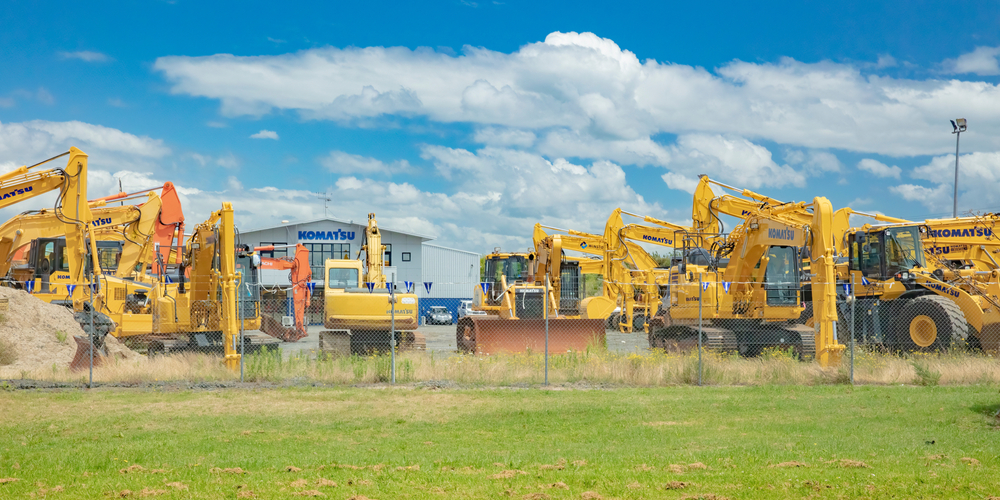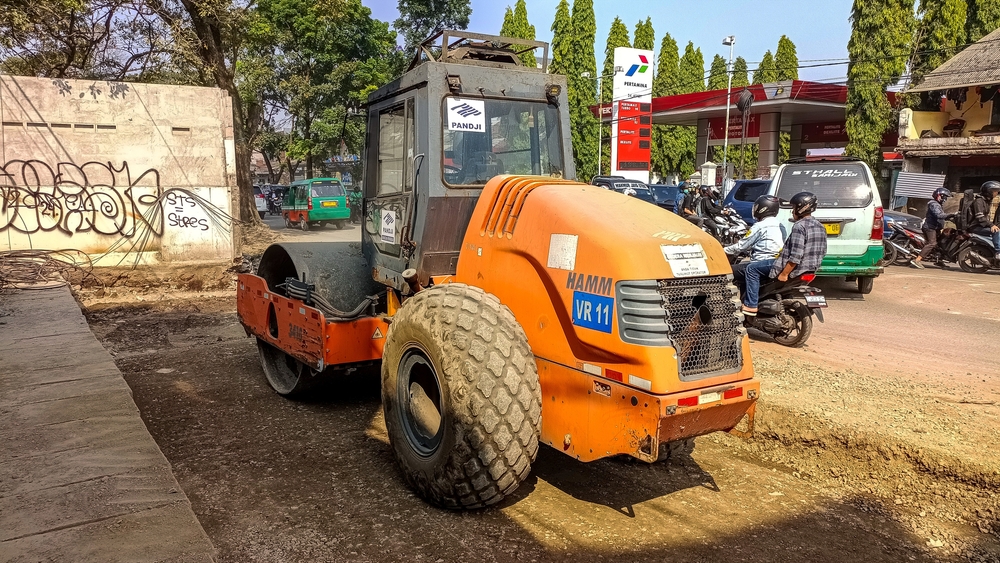Telehandlers, pivotal in modern construction, are hybrid machines that adeptly combine the extensive reach of cranes with the practical handling of forklifts.
This unique combination showcases what a telehandler is through its versatility and efficiency in various construction settings. Engineered to maneuver through diverse terrains and lift loads to significant heights, these tools are indispensable for their ability to handle tasks that other machinery might find challenging.
This adaptability makes the telehandler a critical asset in the construction industry, ensuring projects progress smoothly and efficiently.
The Anatomy of a Telehandler
The telehandler sports a design optimized for both reach and power, making it a versatile asset in a wide range of construction scenarios. The key components that define a telehandler include:
Robust Chassis
The chassis provides a stable base that supports the weight of the telehandler and any load it carries. This stability is crucial when operating on uneven surfaces or when lifting heavy materials, ensuring that the telehandler remains stable and secure during operation.
Extendable Boom
Perhaps the most distinguishing feature of a telehandler, the boom can extend forwards and upwards, allowing operators to reach spaces that would otherwise be inaccessible with a standard forklift. The boom’s versatility is enhanced by its compatibility with various attachments, allowing for a wide range of tasks to be completed efficiently.
Mobility Features
Telehandlers are equipped with either tires or tracks to navigate through different terrains. This adaptability makes them particularly useful in outdoor and rugged construction sites. The choice between tires and tracks depends on the ground conditions of the project site, with tracks suited for softer ground and tires favored in conditions requiring greater speed and maneuverability.
Exploring the Varieties of Telehandlers
Telehandlers are designed to meet specific operational needs within the construction industry, with several types available:
1. Fixed Boom Telehandlers
Known for their durability and straightforward operation, fixed boom telehandlers are the most common type. They are particularly effective in projects requiring high lifting capacities without the need for the boom to rotate.
2. Rotating Telehandlers
These telehandlers feature a rotatable turret that allows the boom to swing across a wide radius. This feature is invaluable in confined spaces where maneuvering traditional equipment would be challenging. The ability to rotate the boom enhances the operator’s ability to position loads with precision, improving safety and efficiency on site.
3. Compact Telehandlers
Tailored for urban and indoor projects where space is limited, compact telehandlers offer increased maneuverability. Their smaller size makes them ideal for navigating narrow passageways and doorways, a common scenario in city-based construction projects.
Essential Attachments for Every Task
The adaptability of telehandlers is significantly amplified by the variety of attachments they can support.
These attachments transform the basic telehandler into a multi-tool capable of performing a myriad of tasks that would typically require multiple pieces of equipment.
Some of the key attachments include:
Pallet Forks
Essential for logistics and material handling, pallet forks are used for moving and stacking materials on pallets, streamlining the process of transporting goods across construction sites.
Muck Grabs
These are ideal for handling agricultural or waste materials. Muck grabs make it easier to manage organic materials, such as in landscaping or farming contexts within construction projects.
Lifting Jibs
Extending the reach of the telehandler, lifting jibs allow the machine to function akin to a crane. This attachment is crucial for lifting heavy materials to heights that are not reachable by the telehandler’s boom alone.
Each attachment is suited for specific tasks, and the ability to switch between them quickly adds a layer of efficiency that is highly valued in fast-paced construction environments.
The quick interchangeability of these attachments enhances the versatility of telehandlers, making them a valuable asset in any construction fleet.
Technical Specifications and Capabilities
Understanding the technical specifications and capabilities of telehandlers is crucial for professionals who rely on these versatile machines for complex lifting tasks. Key specifications include:
Load Capacity
Telehandlers are designed to handle varying loads, with capacities typically ranging from 5,500 pounds to over 12,000 pounds. The specific load capacity depends on the model and its configuration, which must be carefully matched to the project’s requirements to ensure safe and efficient operation.
Reach and Height
The reach and lift height of a telehandler determine how far and how high it can move materials. Models vary, with some capable of extending up to 30 feet horizontally and lifting up to 50 feet vertically, providing essential flexibility in both industrial and urban construction environments.
Engine Power
Engine options often include diesel for high torque and durability or electric for reduced emissions and quieter operation. The choice of engine affects the telehandler’s performance, especially in terms of fuel efficiency and operating cost.
Maneuverability
Equipped with features like four-wheel steering and crab steering, modern telehandlers can navigate tight spaces and rugged terrain, making them ideal for sites that are inaccessible to larger machinery.
Control Systems
Advanced control systems enhance the functionality and ease of use of telehandlers. These systems can include load management software, which helps operators maintain stability and safety by monitoring the weight and position of the load.
Safety First: Best Practices for Telehandler Operation
The operation of telehandlers, while instrumental in enhancing construction outcomes, involves significant risks that must be managed with strict safety protocols.
Some essential safety practices include:
1. Proper Operator Training
Ensuring that all personnel are familiar with the specific model of telehandler in use is crucial.
Training should cover all operational aspects, including the use of different attachments and adherence to safety standards.
2. Daily Equipment Checks
Conducting thorough inspections of the telehandler each day before use is essential to identify and address potential mechanical issues that could lead to accidents.
This includes checking hydraulic systems, tire pressures, and attachment connections.
3. Situational Awareness
Operators must maintain a high level of awareness during operation to prevent collisions with obstacles or personnel.
This includes understanding the environment around the telehandler and being vigilant of changes such as the movement of other machinery or personnel entering the operational area.
Leveraging Telehandlers for Optimal Construction Outcomes
The integration of telehandlers into construction projects offers a pathway to enhanced efficiency and flexibility. These machines provide critical solutions to lifting and moving challenges across various settings, proving their worth as indispensable assets in modern construction.
The adaptability of telehandlers, coupled with their ability to operate in diverse environments, positions them as key contributors to the evolving landscape of construction technology.
For construction industry professionals looking to deepen their understanding of telehandlers or to train in their operation, resources are available that detail advanced strategies and safety practices.
Embracing these resources can lead to significant improvements in project outcomes and workplace safety.









